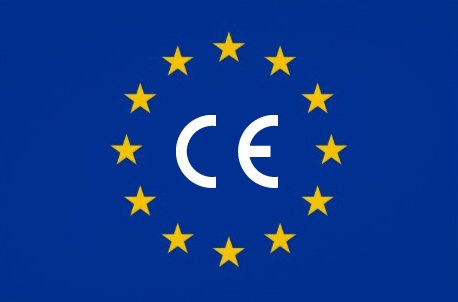Empathy for, and understanding of the target audience is developed through thorough analysis of the market chosen. This informs several factors: the standards that end users demand; how and where to distribute and sell the product; how much they are willing to pay for a certain product and its quality; and how to communicate the launch of a product. Correct analysis of these factors could determine the success or failure of a product, despite its quality.
Marketing is often a new area for designers to consider. Exploring unfamiliar aspects of innovation improves their understanding of the market needs of the products they are designing.
Marketing mix
- The “marketing mix” involves 4 variables or 4 P’s which are product, place, price and promotion.
- A company will through market research using these variables so the designer has an accurate brief of the requirements of the market. Helps to develop a marketing strategy.
- Mindtools has a great set of questions to ask/research for Criterion For your project
The 4Ps:
- Product: standardization of products
- Place: implications of internet selling for a company in relation to its supply chain and distribution network.
- Price: cost-plus, demand pricing, competitor-based pricing, product line pricing, psychological pricing.
- Promotion: advertising, publicity, personal selling.
- Marketing Agenda Website has an Amazon example and explanation.
Product
Product Standardisation “The process of setting generally uniform characteristics for a particular good or service. Product standardization among the goods provided by different businesses operating in technology-based industries can be useful for consumers since it permits competition among the various suppliers.” – from the Business Dictionary
The standardization of products is perform in three ways …
1. Government standards for a particular market segment:
- Is where a governments sets standards for products. For example in Europe that need to set a Health and Safety standard for a product as not to harm the user. It is the CE mark on most electrical devices.
- The CE mark can be used in other countries such as China. Take a look at your mobile phone. So to the website for more information.

2. Component standardization:
- Is where a part standardised,
- e.g. USB ports or plugs, so they can be used in different or similar products, such as memory sticks or computers.

3. Industry-wide standards:
- For a period architects and engineers would ask steel companies for all sorts of sectional beams for buildings.
- This became inefficient and expensive.
- So the steel industry in agreement with the architects and engineers developed a limited range of sectional beams.

Consider examples of trigger products and incremental products.
Place
The location of the product where it will be sold that is convenient for the customer. This could be:
- Bricks and Mortar
- a physical location such as a store
- Boutique, chain, super or hyper makes, etc
- Advantages:
- you can try/touch/see it in real life.
- Find similar products nearby
- Disadvantages:
- commute to store (find parking),
- higher price (store cover costs of rent, distribution, etc)
- time for travel and shopping around
- Advantages:
- Online (internet)
- such as Taobao or Amazon
- Companies need to ensure/plan for a supply chain and distribution network. If the supply chain breaks time it will delay the delivery the product to the customer.
- News Article from the Independent
- Advantages:
- Convenience: can shop from anywhere
- Possibly lower prices
- Disadvantages:
- Shipping time and costs
- Returns if the item is not what you expected
- Cost incurred for returns
- Advantages:
- Hybrid Model
- There is a shop front perhaps in a mall but they also have an online presence as well.
- Direct from the manufacturer
Price
An extremely important aspect of marketing a product is setting the correct price that will attract consumers to make a purchase while generating profit. Without getting the balance right, a company can quickly find that they are losing money through lack of sales or through lack of profit generation. The following strategies for setting price can be used:
-
- Cost-plus pricing
-
- This is where a company will add a percentage to the total costs for a product as a profit margin.
-
- Total costs include: production/manufacture, design, distribution etc.
- Example: If the total cost of the product is $500 and the company wants a 10% profit then the final cost for the consumer would be $550.
-
- Cost-plus pricing
-
- Demand pricing
-
- Is where a a company sets the price according to the demand for the product
-
- Initially the price my be high to maximise profits. If demand wanes then the price will be lower to diffuse into the wider market.
- Examples include smartphones like the IPhone or gaming consoles. They start of high because of the high desirability of the product but as the time passes desirability wanes or new technology (to introduced in new similar products) then price is lowered.
-
- Demand pricing
-
- Competitor-based pricing
-
- Is where a company prices its product based on or in comparison to the price of similar (competitor) products.
-
- It may be price below, same as or higher that similar products.
-
- Costs to produce similar products will be about the same except there may be other features included, thus affecting the price or increasing desirability.
- Examples include smartphones
-
- Competitor-based pricing
-
- Product line pricing
-
- It is where a company sets the different prices for different products within a product line (a group of related products).
- Example: a base price for a basic model, the next product up might have more features or be a better quality – it would be a higher price, and so on throughout the line. Computers, where different models may cater for different consumers.
-
- Product line pricing
- Psychological pricing.
-
Is where a company sets a price for a product so the consumer feels they are paying less. Example: A pair of shoes are priced at $45.99 as opposed to $46
-
Promotion
When selling a product, promotion is another key aspect. Depending on the nature of a product, its position within the product life cycle among other reasons, the forms of promotion can be different.
These include:
-
- advertising – an audio or visual form of marketing communication
-
- publicity – giving out information about the product
- personal selling – Door-to-door salesman, market stalls,
Examples of promotion campaigns for different products

International-mindedness:
When developing marketing campaigns, companies take account of different cultures and sectors in the target market.
Theory of knowledge:
Some advertisers emphasize the “science” behind their products. Does this suggest that some people may see scientific knowledge as being more reliable than knowledge in other areas of knowledge?
Something Extra …
- Marketing Mix Webpage – Price Setting Strategies
https://themarketingagenda.com/page/1/